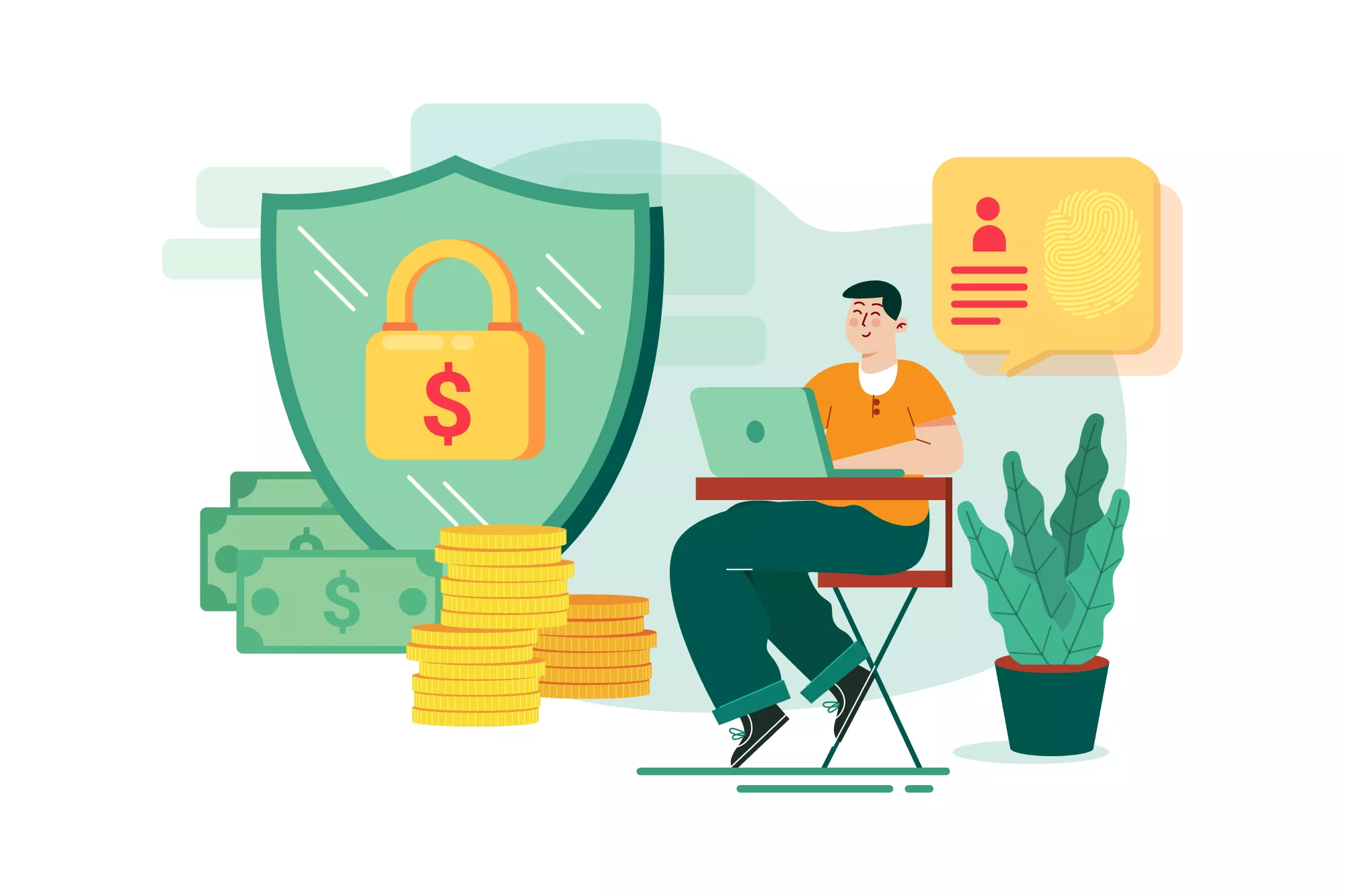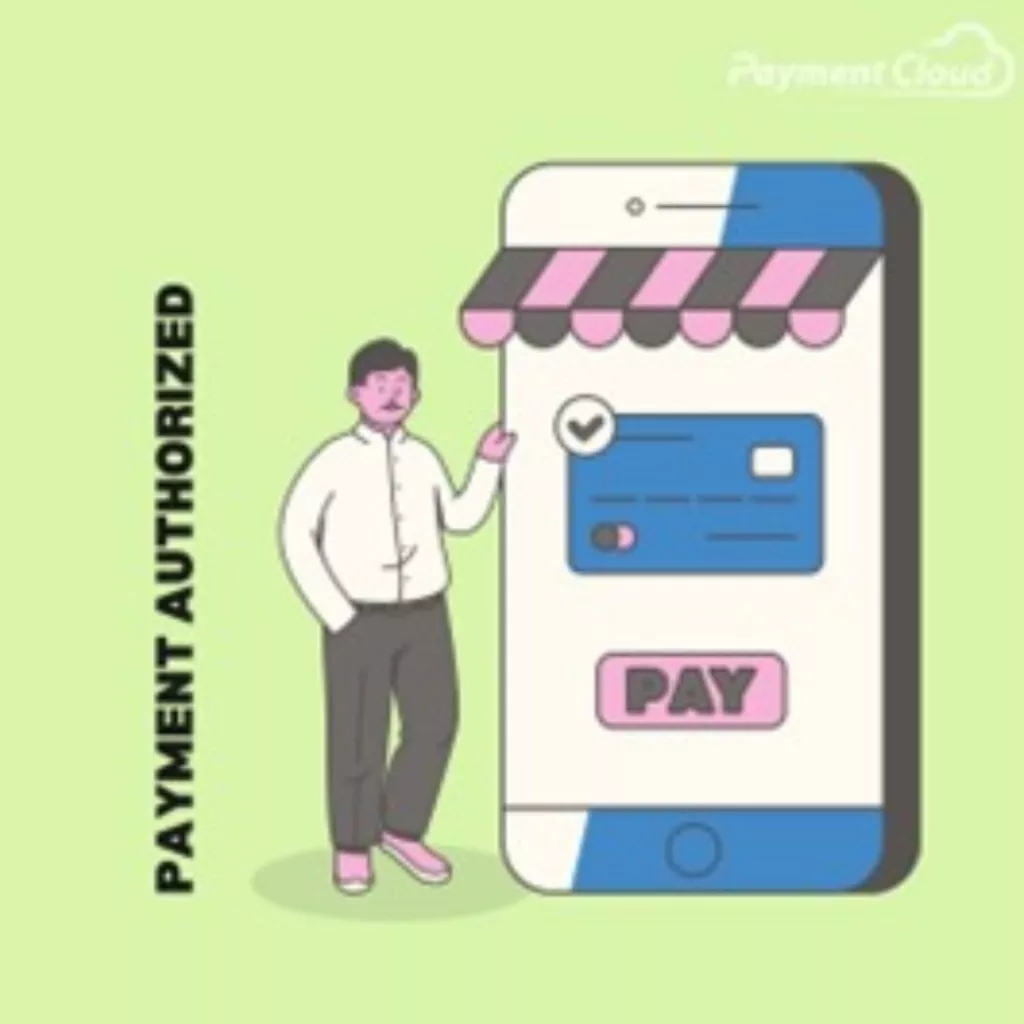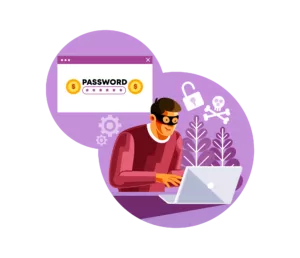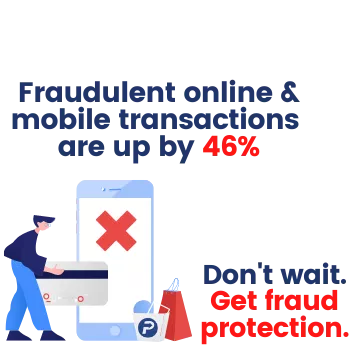
TABLE OF CONTENTS
If your customer pays for a purchase with a credit card, your payment software may verify their identity with their driver’s license, zip code, CVV number, address, or another identifier. This practice of credit card authentication confirms that the person using the card is indeed the cardholder. Below, we explain how credit card authentication works in greater detail and the various authentication methods you can implement to protect your business from credit card fraud.

What Is Credit Card Authentication?
Credit card authentication verifies an individual’s identity when they make a purchase with a credit or debit card. If authentication fails, the card declines. This form of validation helps guard against identity theft, fraud, and the use of a card by someone other than the cardholder.
Below are two examples of credit card authentication in action:
- Card-Not-Present Transaction: Before purchasing an item online, the eCommerce site prompts a customer to input a code sent to their mobile phone.
- Card-Present Transaction: When buying gas at the pump, the card reader prompts a customer to input their zip code, establishing their location.
What Does It Mean to Authenticate Your Payment?
Authenticating your payment means that you—as the cardholder, in this case—have sufficient funds to make the purchase and that you are the verifiable cardholder. After which, the merchant’s payment processor withdraws the specified funds from the cardholder’s account and deposits them into their merchant account.
Payment authentication vs. authorization
Payment authentication verifies that the cardholder is who they claim to be, which then grants them access to funds from the credit card presented. Due to widespread fraud, some merchant services now require two-factor or even multi-factor authentication (MFA). For example, a customer may need to input both their zip code and a code sent to their mobile phone.
Payment authorization confirms that the account has sufficient funds to cover a transaction. During this process, the card issuer transmits the authorization to the payment processor. Then, your processor notifies either your point of sale system or your payment gateway of the authorization. In the event of card-present transactions, your POS receives the notification. Meanwhile, your gateway receives the notification in the event of card-not-present transactions.
Importance of Credit Card Authentication

According to a 2021 report by Statista, there were 1.103 billion credit cards in the United States. That said, credit card fraud is a prevalent concern among merchants, acquiring banks, issuing banks, and cardholders. In fact, a 2022 Global Fraud and Payments report by Cybersource and the Merchant Risk Council found that one dollar in every ten earned from eCommerce transactions is spent managing fraud.
Credit card authentication, although imperfect, helps guard against unauthorized credit and debit card purchases.
Types of Payment Authentication
Currently, there are four main methods for implementing credit card authentication:
Ownership
Credit card authentication by ownership occurs when the cardholder must input a code sent to their mobile phone when making an online or mobile purchase. In the event of card-present transactions, a receipt signature is considered a form of authentication by ownership.
Location
Credit card authentication by location compares the address associated with the card to the proximity of a transaction. If a customer living in Orlando, Florida uses their credit card in Seattle, Washington, the transaction may be denied. That’s why it’s important to notify credit card servicers when traveling.
Inherence
Inherence credit card authentication identifies customers by their biometric information, such as voice or facial recognition, iris or retinal scans, or fingerprint identification. This technologically advanced form of authentication is more efficient and secure than other forms of authentication.
Knowledge
Credit card authentication by knowledge assumes the individual using the card is knowledgeable about something only that individual would know. For example, the last four digits of their social security number or their mother’s maiden name.
Methods of Credit Card Authentication
There are several methods through which you can implement credit card authentication into your business practices. Below is a list of the most popular authentication methods:
Card Verification Value (CVV)
The card verification value (CVV), also sometimes called a card security code (CSC), is typically comprised of three or four digits. It’s located either on the front or back of the card. Providing your card’s CCV, especially when making an online purchase, is a common method of authentication that helps prove that the cardholder is in possession of the credit card.
Challenge-Handshake Authentication Protocol (CHAP)

Challenge Handshake Authentication Protocol (CHAP) encrypts an individual’s password when they’re online. It also periodically re-identifies the user during a new online session by asking the user a knowledge-based security question.
3D Secure 2 (3DS2)
You may have heard of Verified by Visa. As the most well-known 3D Secure protocol, Verified by Visa provides a protective layer of security for credit and debit card purchases made online. This protocol interconnects card networks, financial institutions, and merchants to authenticate transactions for online purchases.
Address Verification System (AVS)
When card-not-present transactions process through a payment gateway, an address verification system (AVS) requests the billing address of the cardholder.
Best Practices for Implementing Payment Authentication
As technology evolves, implementing payment authentication becomes more cost-effective, convenient, and secure for merchants, banks, and consumers. To ensure an extra layer of protection, merchants may consider applying these best practices to their authentication system:
Use more than one form of authentication
When securing your customer’s payment information, utilizing more than one form of authentication makes it much more challenging for malicious actors to complete the transaction. While CHAPS is an excellent method for authenticating a user’s identification before login, it isn’t foolproof. Similarly, AVS works better with another form of identification because it can be bypassed with partial knowledge of a user’s address.
Use real-time insights from big data
Unlike static authentication, such as inputting a password, artificial intelligence, machine learning, and algorithms continuously use real-time insights to prevent fraud and validate transactions.
Work with a specialized merchant service provider
A specialized merchant service provider with expertise in credit card authentication, chargeback prevention, and fraud protection can identify and minimize your business’s chance of credit card fraud without negatively impacting your customer’s journey.

Card Authentication: Closing Remarks
While cardholders’ are entitled to their privacy, implementing credit card authentication shields cardholders from unsanctioned uses of their card. This protection is vital. The number of online and mobile transactions suspected of fraud rose by 46 percent in 2021.
Implementing credit card authentication—a necessity for today’s businesses—can be an intimidating process, but it doesn’t have to be. When you partner with a merchant services provider, they can ensure your authentication doesn’t hinder your customer experience or deter legitimate sales. Most important, they can easily tailor your payment mechanisms to guard against the types of fraud to which your business is most vulnerable.





